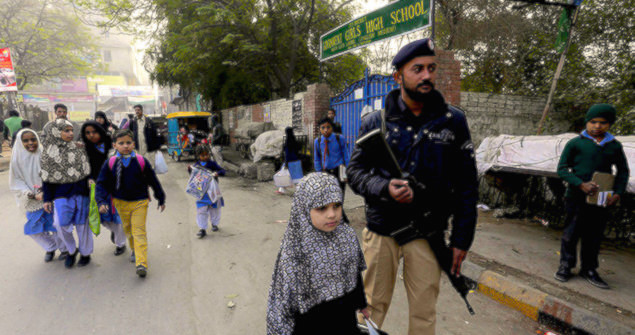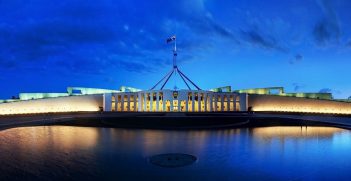Facing Common Threats from Within: Pakistan

Jihadis in Pakistan. Zealots in India. How two old enemies can change their narratives.
Rooting out the poison of religious extremism
The slaughter of 132 schoolchildren and nine adults in an army school in Peshawar on 16 December by the Pakistani Taliban marked a new low in terrorist depravity. The massacre of the innocents brings to a head several pathologies that need addressing and to that end could prove a catharsis for Pakistan.
An Indian, even an expatriate Indian, writing on Pakistan is always a tricky issue. Only Pakistanis can change their national narrative. The dominant narrative is that India is Pakistan’s mortal enemy kept in check by a powerful army and lately by nuclear weapons. Jihadists have been nurtured as strategic assets in an asymmetric war with the bigger neighbour.
The Peshawar massacre proves that Pakistan’s existential threat is from jihadism, not India. The latter can help to contain and then defeat the former, not the other way round.
If it is to purge the toxic Koran-Kalashnikov culture and escape the seemingly inexorable descent into the nightmare of a jihadi state, Pakistan must confront three demons: the false distinction between good and bad jihadists; the excessive influence of the military; and the obsession with India as the enemy. The last will require a matching change of mindset in New Delhi.
Pakistan produces more religiously motivated terrorism than can safely be exported. The primary validating argument behind its creation was negative: Muslims of the subcontinent cannot be ruled by a Hindu-majority government. By contrast, an anti-Muslim, anti-Pakistan posture is not part of India’s core identity. The only other glue that could bind the new country was Islam. No other country has named its capital after a religion.
Starting with the dictator General Muhammad Zia-ul-Haq, Pakistan’s military has harnessed religious hatred to its strategic goals against Afghanistan and India. But as secretary of state Hillary Clinton said famously in 2011, if you keep snakes in your backyard trained to bite your neighbours, some day their venom will be aimed at you. Just as externally India might prove to be the main salvation rather than threat, so domestically the anti-jihadists might prove to be Pakistan’s saviours, not traitors.
To rescue the state, Pakistan’s military-intelligence services must be brought under full civilian control and their links to Islamist militants severed. As a common saying has it, in other countries the state has an army but in Pakistan the army has a state. The enmity with India explains the role of the army as an enduring force of Pakistani politics that rules the country even when civilians are in office. The inflated threat from India validates its size, power and influence, dwarfing all other institutions.
The sorry record of double dealing, deceit and denial of Pakistan-based attacks in Afghanistan and India was based on four degrees of separation — between the government, army, intelligence service (ISI), and terrorists — whose plausibility has faded and it no longer provides a convenient alibi to escape accountability.
The army harnessed Islamism against civilian political parties at home, to maintain control over Afghanistan, and against India. Control over Afghanistan through the Taliban gave Pakistan strategic depth against India. Washington never confronted the core of Pakistani duplicity under General Pervez Musharraf who deposed elected Prime Minister Nawaz Sharif in 1999 and controlled both the military and the state until 2008.
During his rule the Islamists survived, regrouped, built up their base and launched more frequent raids across the border in Afghanistan but also increasingly deep into the heart of Pakistan itself. Slowly but surely, Pakistan descended into the failed state syndrome.
What kind of Pakistan does India want? One on the brink of state collapse and failure, splintered into multiple centres of power, with large swathes of territory under the control of religious zealots and terrorists? Or a stable, democratic and economically powerful Pakistan minus the influence of the three “Ms”: the military, militants and mullahs?
Fearing for ripple effects on its own many potential separatist movements, India professed to having a vested interest in a united, stable Pakistan. This is no longer so straightforward. For over a decade, as Pakistan has teetered on the brink of collapse and disintegration, India has prospered and emerged as a major player in world affairs.
Yet South and Southwest Asian terrorism are indeed indivisible. Many reminders of the enduring relevance of the India equation to Pakistan’s actions in Afghanistan have come from US intelligence confirmations of the links of Pakistan’s ISI to the terrorist attacks on Indian targets in Afghanistan.
India has suffered its own blowback in the past. Prime Minister Indira Gandhi stoked the embers of Sikh religious extremism as a tool of domestic politics. When she tried to put out the fire once it grew into an out of control monster, she was killed by her Sikh bodyguards in bloody vengeance in 1984. Her son Rajiv was killed in 1991 by Tamil Tiger suicide terrorists who had been nurtured as an instrument of state policy by his government. The formula ‘one country’s terrorist is a neighbour’s freedom fighter’ has passed its use by date. All South Asian countries must recognise that terrorism is a common menace and combine forces to exterminate the scourge from the region.
Professor Ramesh Thakur is a former UN Assistant Secretary-General and Director of the Centre for Nuclear Non-Proliferation and Disarmament, Australian National University.
This is the first in a series of two articles published by the Canadian International Council on 8 January 2015. It is republished with permission.





